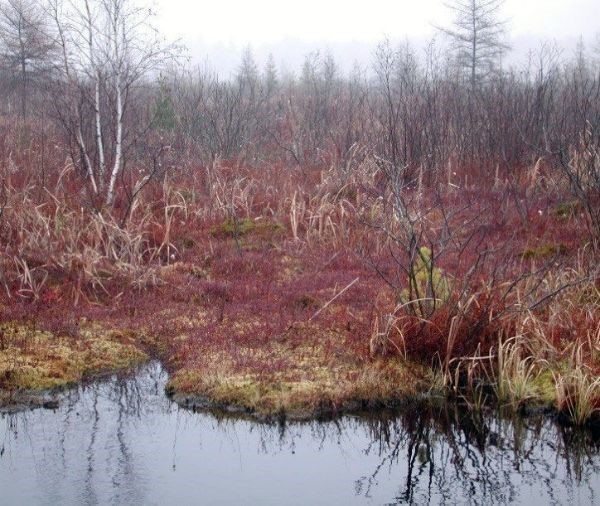
Wild cranberries grow on a floating sphagnum mat in November in central Wisconsin. Image from the American Society for Agronomy.
By Alexandra Lakind, Ph.D. student, Nelson Institute for Environmental Studies, UW-Madison. “Tap In” newsletter.
Wisconsin is the leading producer of cranberries in the U.S., and it is the official state fruit! Cranberries, and their growers, interact with water in many unique ways. Cranberries grow naturally in marshes. They require acidic soil and an ample, local supply of water and sand. In Wisconsin, the cranberry plants flower in late June/early July, and the berries are harvested in September and October, depending on the cultivar.
Because the berries contain a pocket of air, when the marsh is flooded, the berries float to the surface to be picked up by harvesting equipment. Cranberry growers, to quote UW-Madison Horticulture professor Jed Colquhoun, “are the ultimate water engineers.” They protect the fruit buds in the winter by covering the beds with a thick layer of ice, which acts as insulation for the plant. Yet, the effects of climate change (water irregularities, fluctuating temperatures, and loss of ice) pose new challenges. To learn about a wide range of projects seeking to understand cranberries and ensure they make it to your table, visit the UW Fruit Program.


